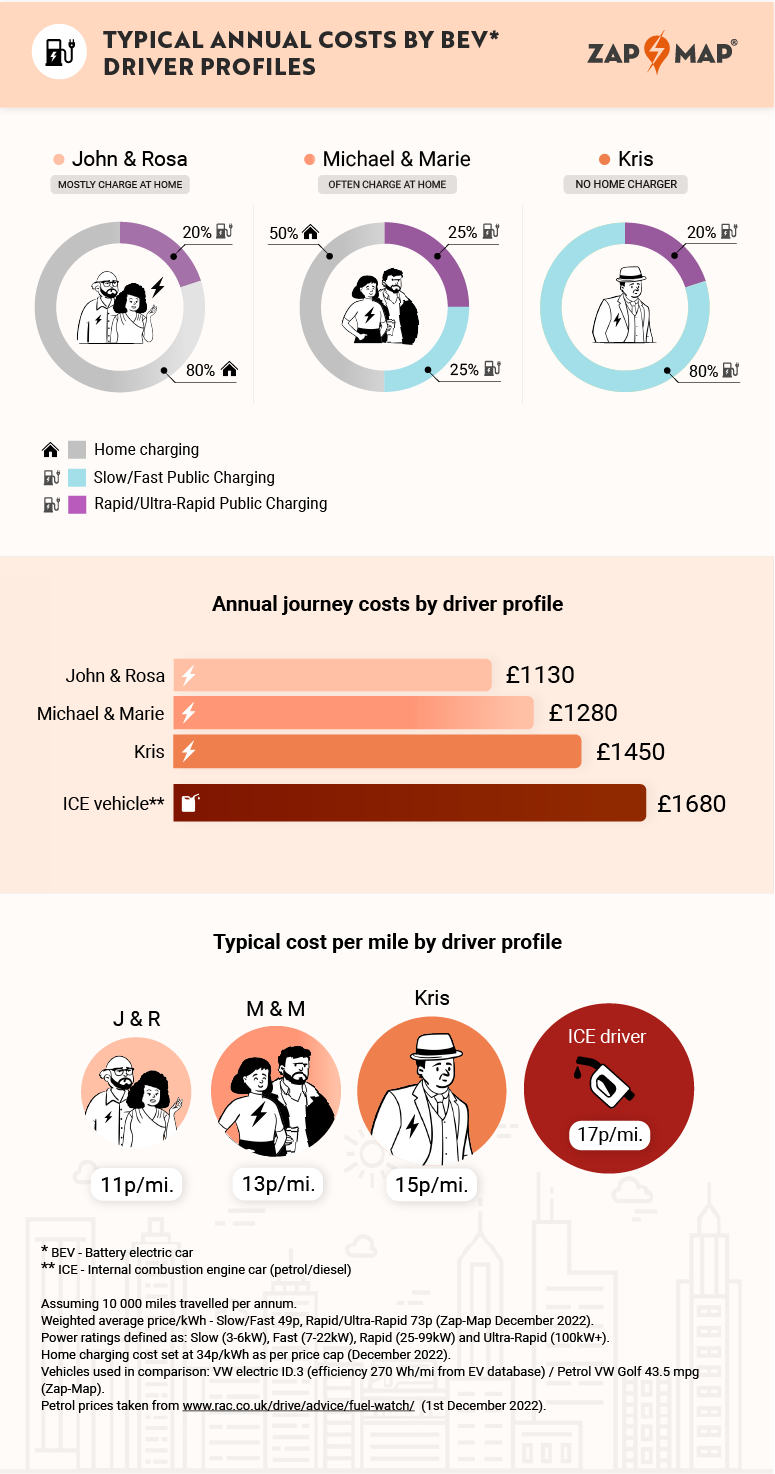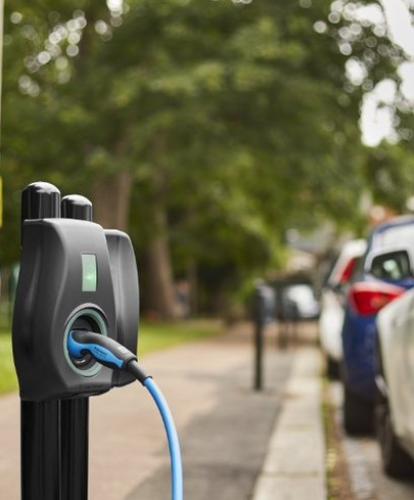Despite a more than 15% increase in the price of public charging, most EV drivers can still save over £400 a year on charging costs.
New analysis from Zapmap, the UK’s leading charge point mapping service, has found that the price drivers are paying to charge an electric vehicle (EV) on the public network has increased by more than 15% overall since September 2022.
However, the price of charging varies substantially across different types of chargers. This means that, despite rising electricity prices, EV drivers using a mix of different charging options can still save money compared to refuelling a petrol or diesel car – and can do so without costing the Earth.
Zapmap’s analysis takes into account more than 500,000 charging sessions per month, across approximately 70% of the charge points in the UK.
The findings show that, in December 2022, the average weighted price of EV charging at a slow or fast charger – mostly found on residential streets or at destinations such as supermarkets or car parks – was 49p/kWh* in the UK.
Meanwhile, the price for a rapid or ultra-rapid charge point, typically used for high-speed, en-route charging, was 73p/kWh*.
This means that prices for slow/fast charge points were up 17%, from 42p/kWh in September 2022. Prices for rapid/ultra-rapid chargers were up 14% in the same period, from 64p/kWh.

Despite this, it is still cheaper to run an electric vehicle than an internal combustion engine (ICE) vehicle. So while the cost of charging on the public network may well have increased, EV drivers can still save versus driving an ICE car.
Zapmap’s Price Index covers a range of charging scenarios, all of which see EV drivers saving on costs versus an ICE vehicle.
For instance, a driver charging at home 80% of the time would save around £550 per year versus an ICE car. Meanwhile, a driver charging at home 50% of the time and splitting their public charging equally across slow/fast and rapid/ultra-rapid options would save £400 per year.
In addition, there are other cost benefits associated with electric cars, which allow EV drivers to make further savings. Not only do EVs have lower maintenance costs, but they are currently exempt from Vehicle Excise Duty (VED) and subject to much lower rates of company car tax.
“Zapmap’s Price Index keeps track of the price that EV drivers pay when out and about, as well as how prices vary across the different types of chargers. This helps drivers to seek out the cheapest charging options and keep an eye on costs,” said Melanie Shufflebotham, Co-founder & COO at Zapmap.
“Although electricity prices have risen significantly, the Price Index shows that you can still save money while being kinder to the planet.”

A driver charging solely on the public network using a combination of slow/fast and rapid/ultra-rapid charging would save around £230 per year.
It is due to this difference in costs that Zapmap chose last year to support the FairCharge campaign, which aims to bring the VAT rate on public charging in line with the VAT rate on domestic energy. This move would bring down costs for EV drivers without access to a home charger.
At present, the majority of EV drivers are able to charge at home. According to Zapmap’s latest EV Charging Survey – which saw responses from more than 4,300 EV drivers across the UK – 84% of respondents have access to a home charger. However, as more and more drivers make the switch to electric, the proportion of drivers without access to a home charger will only increase.
The new analysis comes after record electric car sales in December, which saw more than 42,000 pure-electric cars sold, overtaking petrol for the first time. Satisfaction levels for EV drivers also remain high, with Zapmap’s EV Charging Survey showing 89% satisfaction for pure-electric vehicles – higher than 71% for petrol and diesel.
“With the continued energy crisis, we expect the cost of charging to remain at a higher level, with EV drivers increasingly looking to seek out the most cost-effective combination of home charging and different public charging options,” Shufflebotham continued.
“Drivers are increasingly making the switch to electric, as December’s record electric car sales go to show.
“This means the so-called ‘pavement tax’ issue will only grow in significance over the next few years, and that’s why Zapmap is one of a number of organisations backing the FairCharge campaign. This campaign aims to bring the VAT rate on public charging in line with the VAT rate on domestic energy, and so bring down costs for EV drivers without access to a home charger.”
Through the data collected to drive the Zapmap app, the Price Index tracks over 500,000 charging sessions each month and updates to charge point operator prices in order to provide the latest public EV charging prices on a quarterly basis.



